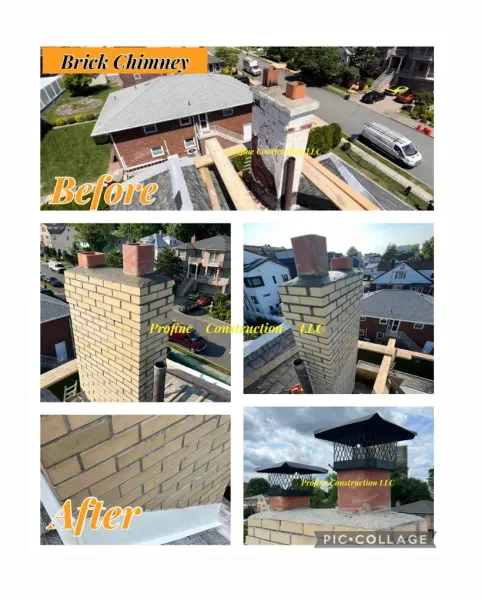Introduction
When it comes to maintaining a home, few things are as satisfying as a fresh coat of paint. But what happens when repairs disrupt that flawless finish? Whether it's a small hole from a nail or a more significant patch due to water damage, touching up paint after repairs is essential for restoring your home's aesthetic appeal. In this comprehensive guide, we’ll explore everything you need to know about paint touch-ups—from the best techniques and tools to the most common mistakes to avoid.
Let’s dive deep into the world of painting touch-ups and get your walls looking as good as new!
Touching Up Paint After Repairs — A Simple Guide
Understanding the Importance of Touching Up Paint
Touching up paint might seem like a trivial task, but it plays an essential role in preserving your home's value and appearance. A well-maintained exterior and interior not only elevate your space aesthetically but can also enhance its market value.
Why You Shouldn't Ignore Touch-Ups
Curb Appeal: First impressions matter! Faded or chipped paint can detract from your home’s charm. Prevent Damage: Scratches or chips can expose underlying materials to moisture or pests. Longevity: Keeping your paint fresh extends its life, saving you money in the long run.Preparing for Touch-Ups: Tools and Materials Needed
Before diving into the actual painting process, gather all necessary tools and materials:
- Paint: Always use the same color and finish as the original. Brushes/Rollers: A small brush works best for touch-ups. Paint Tray: For easier access to your paint. Sandpaper: Smooths rough edges around the repair. Primer: Use if you're working on bare spots or if there’s significant color difference.
Tip: If you’re unsure of the original color, consult with local hardware stores that offer color-matching services.
Assessing the Area Needing Repair
Before applying any paint, take time to assess the area requiring attention:
Look for imperfections or irregularities in texture. Identify whether you need just paint or additional repairs (like drywall patches). Clean the area thoroughly—dirt and grease can affect adhesion.The Painting Process Step-by-Step
Step 1: Prepare the Surface
Sanding down any rough edges is vital for achieving a smooth finish. Use fine-grit sandpaper to make sure all surfaces are even.
Step 2: Clean and Prime (If Necessary)
After sanding, wipe away dust with a damp cloth. If you're dealing with bare areas or significant imperfections, apply primer before painting.
Step 3: Apply Your Paint
Using your brush or roller, carefully apply paint in thin layers. It's better to do multiple light coats than one heavy coat.
Pro Tip: Lightly feather the edges of each application to blend seamlessly with existing paint.
Step 4: Allow to Dry and Inspect
After applying the final coat, let it dry thoroughly before inspecting for any missed spots or imperfections.
Common Mistakes When Touching Up Paint
Even seasoned DIYers make mistakes! Here are some pitfalls to avoid during your project:

Seasonal Considerations for Touch-Up Painting
Weather can significantly impact painting outcomes—be mindful of seasonal conditions:
- Humidity Levels: High humidity can slow drying times and affect adhesion. Temperature Fluctuations: Ideally, paint when temperatures are between 50°F and 85°F for optimal results.
Frequently Asked Questions (FAQs)
What type of paint should I use for touch-ups?
Always choose high-quality latex paints that match your original color and finish type (matte, eggshell, etc.).
How much does it cost to touch up paint?
Costs vary widely based on your location and material choice but typically range from $50-$150 depending on labor if you hire someone versus doing it yourself.
Can I mix leftover paints for touch-ups?
While it's tempting, mixing leftover paints may result in different hues—always test on a small area first!
How often should I perform touch-up work?
Aim for annual inspections; frequent checks help catch issues early before they require extensive repairs.

Do I need primer before touching up?
For minor dings where bare material is exposed, yes! Primer helps ensure even coverage; however, it's not always necessary over existing painted surfaces.
Is it better to hire a professional for touch-ups?
While many homeowners successfully tackle touch-ups themselves, hiring a professional ensures flawless results—especially if you're uncomfortable with DIY tasks!
Conclusion
So there you have it—a simple yet thorough guide on touching up paint after repairs! Taking care of those little marks here and there will keep your home looking fresh while extending its lifespan dramatically. Remember that preparation is key; invest time in gathering remodeling contractors proper materials and assessing surfaces before diving into painting.

Whether you’re getting ready for summer gatherings or just want everything looking sharp inside before winter sets in again—it’s worth taking these steps now! Happy painting!
This guide has provided valuable insights not only into touching up paint after repairs but also into maintaining overall aesthetics within your home environment—ensuring longevity without breaking the bank along the way!